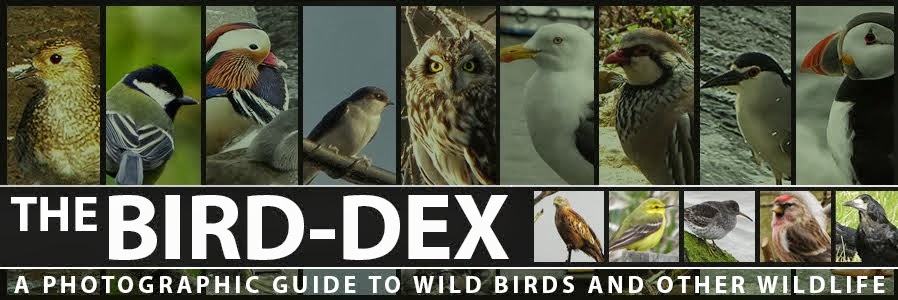OTHER NAMES: N/A
Latin Etymology: Coccothraustes ("seed break") coccothraustes ("seed break")
Two adult Hawfinch (subspecies C. c. coccthraustes) at El Parod, Spain - April 2016
Featured Subspecies: Coccothraustes coccothraustes coccothraustes
Weight: 46-70g / Length: 18cm / Wingspan: 29-33cm
UK RED LIST / IUCN Red List: Least Concern
Hawfinches are simultaniously by far the biggest finch, and, strangely, the hardest to locate of all the species in the UK. Theoretically, they are very widespread, but they are very secretive and generally will hide from humans long before you know they are there. They are more easily seen in the Winter when leaves are off the trees, but even then it's probably easiest to go see one that has been reported as being around for a while like my first bird at Rutland Water. On the Continent they are far more common, and I came across this pair along the river at El Pardo entirely by coincidence - something that in the UK would be a massive highlight of the day.
Related Species:
Order: Passeriformes
Family: Fringillidae
Genus: Coccothraustes
Subspecies: C. c. coccothraustes, C. c. buvryri, C. c. nigricans, C. c. hummii, C. c. schulpini, C. c. japonicus
- Sighting Locations -
UNITED KINGDOM - Scarce breeding species (500-1000 pairs) and Wintering species (10-15,000 birds)
- A single bird at Rutland Water in December 2012,
- MADRID 2016 TRIP: Two seen at El PardoFurther Notes: BirdForum Opus, IUCN Red List, RSPB, Wikipedia, Xeno-canto


No comments:
Post a Comment